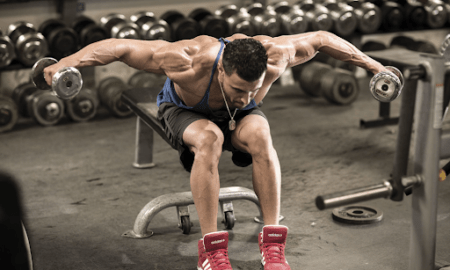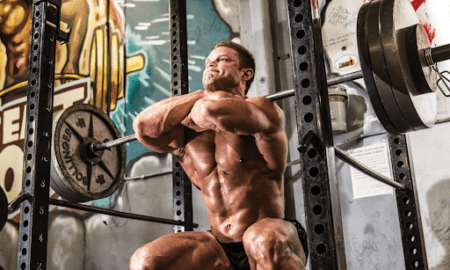Q: My gym is near my house, and I can train twice a day, early morning and early evening. How should I organize my training sessions?
A: When training twice a day, it’s important to sequence the exercises properly. If you’re training the same bodypart twice in one day, I recommend compound exercises in the morning and isolation exercises in the evening. If you’re training the pectorals, the morning session could consist of incline presses and dips; the evening session would be dumbbell flyes and various cable exercises.
If you’re serious about committing to such a workout schedule, I recommend gradually increasing the volume of training—don’t just start training an hour in the morning and an hour at night, seven days a week. You’ll quickly burn out and probably injure yourself. The following is a formula, used for a given bodypart, such as legs, that I developed to introduce trainees to twice-a-day training:
Workout 1
Morning: 40 to 50 minutes; evening: 20 minutes
Workout 2
Morning: 50 to 60 minutes; evening: 20 to 30 minutes
Workout 3
Morning: 40 minutes; evening: none
Workout 4
Morning: 50 to 60 minutes; evening: 25 to 35 minutes
Workout 5
Morning: 50 to 60 minutes; evening 30 to 40 minutes
Workout 6
Morning: 40 minutes; evening: none
Workout 7
Morning: 50 to 60 minutes; evening: 40 to 50 minutes
Workout 8
Morning: 50 to 60 minutes; evening: 40 minutes
Workout 9
Morning: 50 to 60 minutes; evening: none
Q: What do you think of plate squats for teaching beginners how to squat properly? I recently saw an article about it in a respected strength coaching publication.
A: I saw the article too and wondered how it got through the editing process. The plate squat was presented as the first exercise in a series designed to teach beginners how to squat properly.
To perform the exercise, you start by resting a weight plate on the top of your head while supporting it with your hands; and then a ball, such as a volleyball, is placed in the center hole of the plate. A suggested weight for a beginner is 22 pounds (10 kilos), but the authors say that in a few weeks the average trainee should be able to use as much as 55 pounds (25 kilos). The exercise consists of descending into a full squat while keeping the plate parallel to the floor—if the ball falls off the plate, you are not performing it correctly.
Although the practice of carrying heavy loads on the head is traditional in many cultures around the world, unconditioned beginners could easily injure their neck performing this exercise, as it places a lot of compressive loads on the spine. That would be especially true if the trainees display an excessively forward head posture.
A forward head posture is a structural imbalance that places the neck at a great risk of injury, and adding a compressive load to the head by means of a weight plate is just asking for bad things to happen. Further, the authors of this article noted that the mechanics of this bizarre exercise “have not been studied in a laboratory.” Any volunteers?
Editor’s note: Charles Poliquin is recognized as one of the world’s most suc-cessful strength coaches, having coached Olympic med-alists in 12 different sports, including the U.S. women’s track-and-field team for the 2000 Olympics. He’s spent years researching European journals (he’s fluent in English, French and German) and speaking with other coaches and scientists in his quest to optimize training methods. For more on his books, seminars and methods, visit www.CharlesPoliquin.com. Also, see his ad on page 135 IM




















You must be logged in to post a comment Login